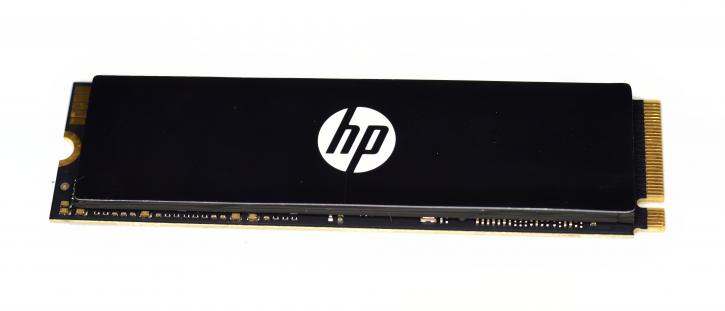Final Words & Conclusion
Final Words & Conclusion
The HP SSD FX900 PRO is a good NVMe drive. You get a high-end InnoGrit IG5236 controller. This is a TLC NAND product, which shows in some areas (long sustained writes). No radiator was applied originally because there is a graphene thermal pad, or you can use the motherboard's radiator. The HP SSD FX900 PRO should be a nice choice for typical office users or gamers (like HP is aiming for) and also suitable for some heavy users. It is the company's best M.2 NVMe SSD with PCI-Express 4.0 capability. The overall performance is high and always close to the available top SSD. This can be seen in synthetic tests and, more importantly, in simulating actual use. The black PCB includes Micron's 176-layer NAND Flash TLC. It is a high-performance SSD with TLC writing, high endurance, and a 5-year guarantee.
Do we need 5000+ MB/sec storage units?
It is a higher-end performance product, often synthetically measured, and you'd need serious workloads to get the best out of it. It is usually bought by the guys that purchase a GeForce RTX 4080/4090 or Radeon RX 6950 XT combined with some Core i9 or Ryzen 9 series processor. Your PC isn't going to boot faster as your OS is the bottleneck; your PC games might load a fraction of a second faster, and your application load up just as quickly as an NVMe SSD with reads/writes in the 2 GB/sec marker. In retrospect, however, we have new technologies like DirectStorage. It will allow the graphics card to load textures directly from the SSD bypassing the processor, freeing up processor cycles for other tasks, and speeding up texture load times. In this way, if they have a fast M.2 disk, they will be in the game in less than 5 seconds, even on large maps, a little time compared to the loading times we are used to today. That technology should be released for Windows 11 (and 10, but this one is not the optimal one for this technique).
Endurance
Endurance is the number of times NAND cells can be written before they die and are mapped out; any data present on that cell is re-written to a healthy one. Bigger volume sizes mean more NAND cells; more NAND cells thus increase endurance. HP SSD FX900 PRO offers 1200 TBW (Terabyte Written) for a 2 TB unit, which we've reviewed, 300 TBW for the 512 GB, 600 TBW for the 1 TB, and 2400 TBW for the 4 TB version. So how long does a 1200 TBW storage unit last? If you are an extreme user, you might write 50 GB per day (normal users likely won't even write that per week), but based on that value, 50GB x 365 days = 18.25 TB per year written. So that's almost 66 years of usage. Additionally - the reviewed drive has MTBF (Mean Time Between Failures) of up to 1,000,000 Hours which is theoretically ~114 years. That's long.
Thermals
The HP SSD FX900 PRO has the graphite thermal pad applied, which undoubtedly helps (a bit) keep the temperature under control. There's some throttling under an extreme workload, so we recommend installing a heatsink.
Performance
The HP SSD FX900 PRO is fast. It performs as it should. We don't have any significant negative observations about the unit.
Conclusion
The HP SSD FX900 PRO is an M.2 2280 NVMe SSD that utilizes an InnoGrit IG5236 controller with a 176-layer 3D TLC NAND NAND flash to support capacities of up to 4TB. The SSD features a PCIe Gen 4 NVMe interface for compatibility with PCs. To keep the NVMe 1.4 standard, you do not need to install additional drivers; only ensure that your operating system is up to date. After that, install and format the SSD, and you're good to go. HP warranties the storage unit for five years / or the claimed TBW value (1,000,000 hours). Four storage capacities are available: 512 GB, 1TB, 2TB, and 4 TB. We believe you will not notice the real-world effect and difference between a 3GB/sec and a 7GB/sec (and even 10 GB/s) SSD anytime soon, but DirectStorage is getting quickly supported, and that's where it will matter. If an application loads in a fraction of a second, it will be quicker in that fraction of a second. Other than that somewhat personal remark, all lights are green, TLC, high endurance, and have a warranty (5 years). The provided graphene thermopad makes this SSD run relatively cold, and there's no thermal throttling. For the best performance, you need a compatible Ryzen and a B550/X570/B650/X670 motherboard if you're on the "red side." If you like "the blue," s – the 11th-13th gen and Z590/Z690/Z790 boards should be chosen. HP FX900 PRO 2TB is a very decent product; the performance is above average, and the temperatures using the provided thermal pad are too. If you want a satisfactory performance, you can choose that drive, which is why we're giving it an "Approved" award.
Recommended Downloads
- Anvils Storage Utilities
- AS SSD
- CrystalDiskInfo
- CystalDiskMark
- PC Mark Vantage Storage Tests
- SiSoft Sandra Benchmark suite
- ATTO Disk Benchmark
- Sign up to receive a notification when we publish a new article
- Or go back to Guru3D's front page


